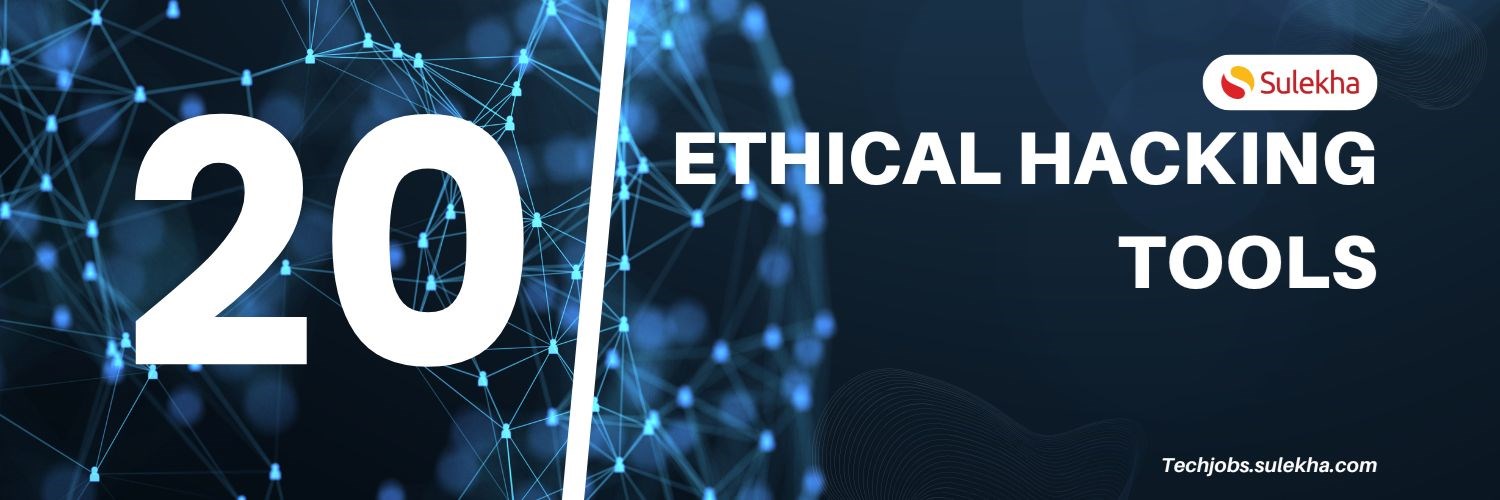How ML and AI will play a more significant role in Cybersecurity
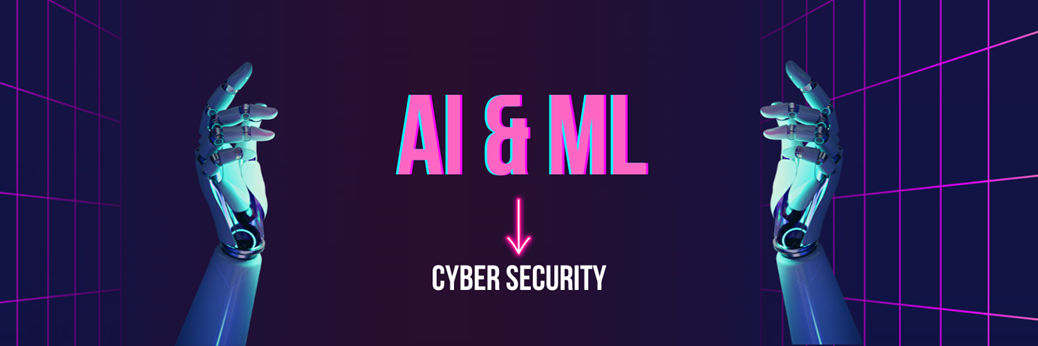
In the world of digitalization, Artificial Intelligence (AI) and Machine Learning (ML) act as vigilant digital security guards and work tirelessly to protect your digital assets in the cybersecurity field. The technologies are like super-powered detectives" tools that aid in recognizing and responding to cyber threats in real time.
In this blog, we shall discuss how AI and ML are utilized in Cybersecurity, what is Cybersecurity, and the future growth of Cybersecurity in detail.
Why is Cybersecurity critical?
Our data is stored digitally as everything becomes online, from shopping to registration. Moreover, the increasing reliance on digital technology in our personal and professional lives has expanded the attack surface. Cybercriminals have more opportunities to exploit vulnerabilities with more devices and systems connected to the internet.
Cybersecurity safeguards internet-connected systems, including hardware, software, and data, from attack, damage, or unauthorized access.
What is Cybersecurity?
Cybersecurity professionals are experts with the authority to protect the computer system or internet from malicious attacks. These professionals play a critical role in maintaining the security and integrity of information technology environments. These professionals often possess diverse skills, including expertise in network security, ethical hacking, cryptography, incident response, risk management, and compliance with cybersecurity standards and regulations.
What are the types of cyber threats?
The cyber threats include Malware, Phishing, Ransomware, Distributed Denial of Service (DDoS) Attacks, Insider Threats, Social Engineering, Man-in-the-Middle (MitM) Attacks, SQL Injection, Cross-Site Scripting (XSS), Password Attacks, Spoofing, Clickjacking, Cryptojacking, Data Breaches, and others.
Each of the attacks has its way of exploiting a computer system or network. For example, the Phishing method is utilized by attackers to obtain the sensitive data of a person, including name, passcode, and details of credit cards. In this type of hacking, hackers disguise themselves as trustworthy entities.
A ransomware attack is a malicious cyber incident in which cybercriminals use a specific type of malware to encrypt a victim"s files or entire computer systems, rendering them inaccessible. The attackers then demand a ransom payment, usually in cryptocurrency, from the victim in exchange for the decryption key needed to regain access to the data. Ransomware attacks can be devastating, causing significant disruption to individuals, businesses, and organizations, leading to data loss, financial losses, and potentially damaging the victim"s reputation. These attacks often employ social engineering tactics, such as phishing emails, to trick users into downloading or executing the malware.
Traditional Approach to Cybersecurity Before AI
Before the utilization of AI, Cybersecurity relied upon two types of methods:
- Rule-based systems
- Signature-based detection methods
These two are travail processes in handling large amounts of data. Moreover, manual processing is a consuming process in maintaining logs and data and providing responses. Furthermore, the lack of real-time data analysis and automation will be challenging when the attack techniques change rapidly.
The traditional method found it challenging to keep up with the complexity of cyber threats, highlighting the need for a more flexible and proactive response.
How AI is Different from Traditional Approaches to Cybersecurity?
AI (Artificial Intelligence) differs significantly from traditional approaches to Cybersecurity in several key ways:
Proactive Detection
AI is utilized in ML algorithms to analyze enormous data and detect vulnerabilities, whereas traditional data analysis methods rely on predefined signatures.
Adaptive Learning
AI immediately learns the new datasets, adapts new attack patterns, and protects the system from cyber-attacks. In contrast, the traditional method requires a manual process to keep up with evolving tactics.
Behavioral Analysis
AI observes the behavioral patterns of the system, identifies unusual activities in the network or system, and triggers alerts.Pattern Recognition
AI can analyze any complex attack at the early stage and protect data sources, even if attackers disguise themselves as trustworthy entities. In the traditional method of data analysis, we cannot detect immediately.
Reduced False Positives
AI’s self-learning capability enables it to reduce false positives by refining its understanding of what constitutes normal behavior, leading to more accurate threat detection.
Real-Time Response
AI automates real-time threat response by instantly flagging and neutralizing suspicious activities. Traditional methods may require manual intervention, leading to slower responses.
Threat Hunting
AI-driven analytics enable proactive threat hunting, actively seeking out hidden threats and vulnerabilities within the system, which traditional methods often overlook.
Prediction and Prevention
AI is used in Cybersecurity for prediction and prevention by analyzing historical data and current network activity to identify potential threats before they manifest. It can proactively recognize patterns associated with malicious behavior, enabling security teams to take preventive measures to thwart attacks.
Scalability
AI can scale quickly to handle large and complex datasets and networks, which is challenging for human analysts alone.
Learning from Experience
AI can predict potential threats based on historical data and trends, allowing organizations to address vulnerabilities proactively.
Complexity Handling
AI can handle intricate and multidimensional attack plans, including advanced persistent threats and polymorphic malware that can surpass standard protections.
Minimized Human Bias
Human perspectives could affect conventional procedures, whereas AI-based judgments are impartial and consistent in their threat assessment.
Application of AI in Cyber Security
The application of AI in Cybersecurity encompasses various crucial areas, including:
Using ML for Malware Detection and Classification
AI in cyber security is utilized to detect and classify malware. On the other hand, machine learning algorithms are used in Cybersecurity to find types of attacks that prevail, such as viruses, worms, and trojans, or even attacks that had not been seen before.
Adversarial ML and its Implications for Cybersecurity
Machine learning (ML) strategies deployed against ML models are called adversarial ML (ML)—a substantial impact of adversarial ML in Cybersecurity. Attackers can create malicious inputs to trick ML models and get beyond security safeguards. This may result in false positives, where legal actions are tagged as malicious, or false negatives when malware is not found. Adversarial ML approaches can be used, making it difficult to defend against complex attacks to avoid detection and intrusion prevention systems. Strong protections and ongoing monitoring are essential to reduce the dangers of hostile machine learning in Cybersecurity.
AI-based Network Traffic Analysis and Anomaly Detection
AI and ML play a pivotal role in network traffic analysis and anomaly detection by continuously monitoring network behavior and identifying deviations from established patterns. Through adaptive learning, these technologies can evolve to adapt to changing network conditions and emerging threats, enhancing overall network security.
AI-assisted Penetration Testing and Vulnerability Management
AI-assisted penetration testing utilizes machine learning algorithms to automate and enhance identifying vulnerabilities and assessing system security. It can simulate real-world attacks, identify weaknesses, and prioritize remediation efforts. This approach enables organizations to manage and mitigate security risks proactively, improving overall cybersecurity posture.
Real-time Threat Intelligence with Machine Learning
In Cybersecurity, real-time threat intelligence is another area where AI and ML are used. These systems use machine learning algorithms to analyze data from various sources and provide real-time threat intelligence. This enables organizations to identify and respond to emerging threats quickly.
AI-powered Security Automation and Orchestration
AI-powered security automation and orchestration is another area where AI and ML are used. These systems use machine learning algorithms to automate repetitive security tasks like patch management and incident response. This enables organizations to free up human resources and focus on more important tasks.
AI-based User and Entity Behavior Analytics
AI-based User and Entity Behavior Analytics (UEBA) leverages machine learning to analyze user and entity activities within a network. It establishes a baseline of normal behavior and identifies deviations that could signify insider threats or compromised accounts. UEBA"s adaptive algorithms evolve with the evolving threat landscape, improving the detection of suspicious or malicious behavior and enhancing an organization"s overall security posture by providing early warning signs of potential threats.
This proactive approach enables faster response and mitigation, reducing the impact of cybersecurity incidents.
AI-Powered Cyber Threat Hunting
AI-powered cyber threat hunting is an advanced cybersecurity practice that leverages artificial intelligence and machine learning to proactively seek out and identify potential threats within an organization"s network. The primary aim of this threat haunting is to discover and prevent malicious activities before they cause significant loss for the organization.
One of the prominent advantages of AI-powered threat-hunting is its ability to analyze enormous amounts of data and recognize patterns that may signify a threat, such as malware, Advanced Persistent Threats (APTs), or phishing. With the aid of AI-Powered Cyber Threat Hunting, we can detect and categorize new threats in real time, even if they have not been previously seen.
AI And ML in Intrusion Detection and Prevention Systems
AI and machine learning (ML) are critical components of cybersecurity intrusion detection and prevention systems (IDPS) because they continuously analyze network traffic and system logs for suspicious patterns and anomalies. By learning from prior data, these technologies can detect new and evolving threats, adapt to changing attack strategies, and eliminate false positives. AI and ML improve the efficiency and effectiveness of IDPS by automating threat detection and response, allowing enterprises to protect against a broad spectrum of cyber threats in real-time.
Disadvantages of Using AI and Machine Learning in Cybersecurity
- High Cost: Executing and handling Artificial Intelligence and Machine Learning systems can be pricey. Organizations must spend money on hardware, software, and skills to deploy and administer the system.
- Intricacy: To work efficiently with AI and ML systems, an individual should possess the proficient skills to deploy, set up, and operate.
- Dependence on Data Quality: The efficacy of artificial intelligence and machine learning in Cybersecurity is determined by the quality of the data utilized to train the machine learning algorithms.
- Lack of Transparency: AI and Machine Learning systems employ complicated algorithms that might be challenging to comprehend and interpret.
- False Positive And False Negative Alerts: AI and Machine Learning systems may create many false positive and false negative warnings due to the intricate nature of the machine learning algorithms.
- Lack of Human Oversight: AI and Machine Learning systems can automate tasks independently; they are autonomous, which means they do not require human intervention.
- Vulnerability to Adversarial Attacks: AI and Machine Learning systems can be vulnerable to adversarial assaults, in which malicious individuals attempt to modify input data to avoid detection or trick the system.
- Lack of Explainability: AI and Machine Learning systems may require assistance describing how they arrived at a result, making the conclusions hard to understand and trust.
Future of AI in Cyber Security:
The future of AI in Cybersecurity is about strengthening defenses, enabling faster response to threats, and creating a more adaptive and resilient security ecosystem in an increasingly complex digital landscape.
Autonomous Security Systems
AI and ML provide autonomous security because they can operate independently and make decisions without human intervention. As it can make decisions on its own, it responds to threats quickly in real-time.
Predictive Threat Intelligence
AI and machine learning could be used to examine data from diverse sources and predict threats. Organizations could expect and prepare for potential dangers before they occur.
Advanced Threat Hunting
AI and ML can revolutionize advanced threat-hunting systems by leveraging their data-processing and pattern-recognition capabilities. These technologies continuously collect and analyze massive volumes of network and endpoint data, automatically identifying unusual behaviors, known attack patterns, or even potential zero-day threats.
AI-Driven Incident Response and Forensics
AI and machine learning can analyze the data from various sources, such as network traffic, endpoint data, and logs, to identify and respond to threats in real time. This would allow organizations to manage and look into problems immediately.
Automated Compliance and Governance:
AI and ML can automate compliance and governance processes by continuously monitoring vast datasets to ensure adherence to regulatory standards and security policies. They can identify deviations, generate real-time compliance reports, and even predict potential compliance risks, streamlining audits and reducing the burden of manual checks. Additionally, these technologies can adapt to evolving regulations, keeping organizations up-to-date and resilient in changing compliance requirements.
AI-Powered Security Automation and Orchestration
AI and machine learning might automate repetitive tasks like patch management and incident response, freeing up human resources to focus on more critical duties.
The Intersection of AI and Blockchain
Combining AI and blockchain technology offers enhanced data privacy and security, as blockchain"s decentralized nature ensures transparency and immutability. At the same time, AI algorithms can efficiently analyze and process large amounts of data.
AI-Driven Security Operations Centers (SOC)
AI and ML can enhance security operations centers by automating routine tasks like log analysis and threat detection, enabling security analysts to focus on more complex and strategic activities.
In conclusion, ML and AI are set to play increasingly significant roles in Cybersecurity. As these technologies evolve, they will offer more sophisticated threat detection, faster incident response, and adaptive security measures, all essential in defending against the ever-evolving landscape of cyber threats.
Embracing AI and ML is not merely a choice but a necessity for organizations looking to fortify their digital defenses and navigate the complex challenges of tomorrow"s cybersecurity landscape with confidence and resilience.
Find a course provider to learn Cyber Security
Java training | J2EE training | J2EE Jboss training | Apache JMeter trainingTake the next step towards your professional goals in Cyber Security
Don't hesitate to talk with our course advisor right now
Receive a call
Contact NowMake a call
+1-732-338-7323Take our FREE Skill Assessment Test to discover your strengths and earn a certificate upon completion.
Enroll for the next batch
hands on cyber security training
- Sep 1 2025
- Online
cyber security classes online
- Sep 2 2025
- Online
hands on cyber security training
- Sep 3 2025
- Online
Cyber Security
- Sep 4 2025
- Online
hands on cyber security training
- Sep 5 2025
- Online
Related blogs on Cyber Security to learn more

Cybersecurity Training: Powering Digital Defense
Explore top cybersecurity training programs in the USA to meet rising demand in digital defense. Learn about certifications, salaries, and career opportunities in this high-growth field.

What Does a Cybersecurity Analyst Do? 2025
Discover the vital role of a Cybersecurity Analyst in 2025, protecting organizations from evolving cyber threats through monitoring, threat assessment, and incident response. Learn about career paths, key skills, certifications, and why now is the be
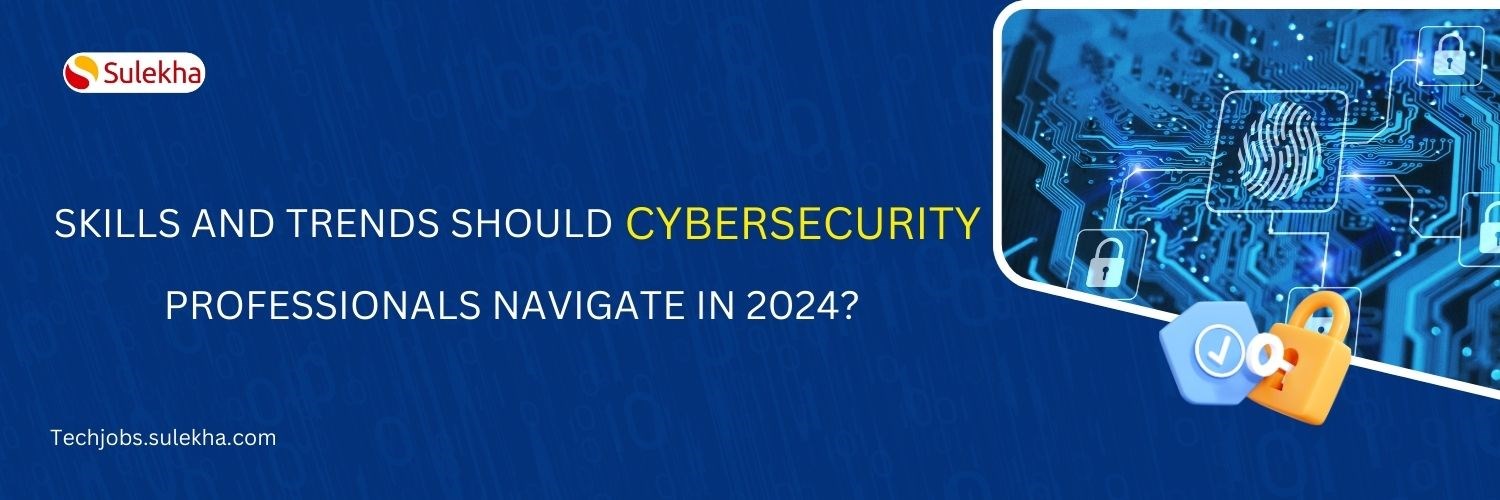
What essential skills and trends should cybersecurity professionals navigate in 2024?
Cybersecurity professionals in 2024 must master a diverse skillset, from cloud security and AI to soft skills like communication and problem-solving, to stay ahead of evolving cyber threats and regulations.

What Does a Cybersecurity Analyst Do?
Learn about the role of a Cybersecurity Analyst, responsible for protecting an organization's computer networks from cyberattacks.

10 Popular Cybersecurity Certifications
From CompTIA Security+ to CISSP, these certifications can boost your career and demonstrate your commitment to protecting computer systems and networks.

What are the most popular technical certifications for future career advancement?
Unlock your potential with insights into 5 popular technical certifications for future career growth, spanning cybersecurity, blockchain, cloud computing and more. Explore pathways for professional advancement today.

How to Become a Security Architect: 2024 Career Guide
How to Become a Security Architect: 2024 Career Guide In today's fast-paced and digitally interconnected world, the role of a Security Architect

Tips to get a job in top companies - Find out about the strategy and preparation to get started with Cybersecurity
As companies adopt cloud services, IoT devices, and remote work solutions, their attack surface expands. Cybersecurity experts are essential to ensure the security of these technologies and networks. The expertise of cybersecurity specialists bolster

Types of certification path in cyber security
Pursuing certification courses in cybersecurity is considered mandatory due to several compelling reasons. Firstly, the ever-evolving nature of cyber threats demands that cybersecurity professionals stay updated with the latest knowledge and skills.
Latest blogs on technology to explore
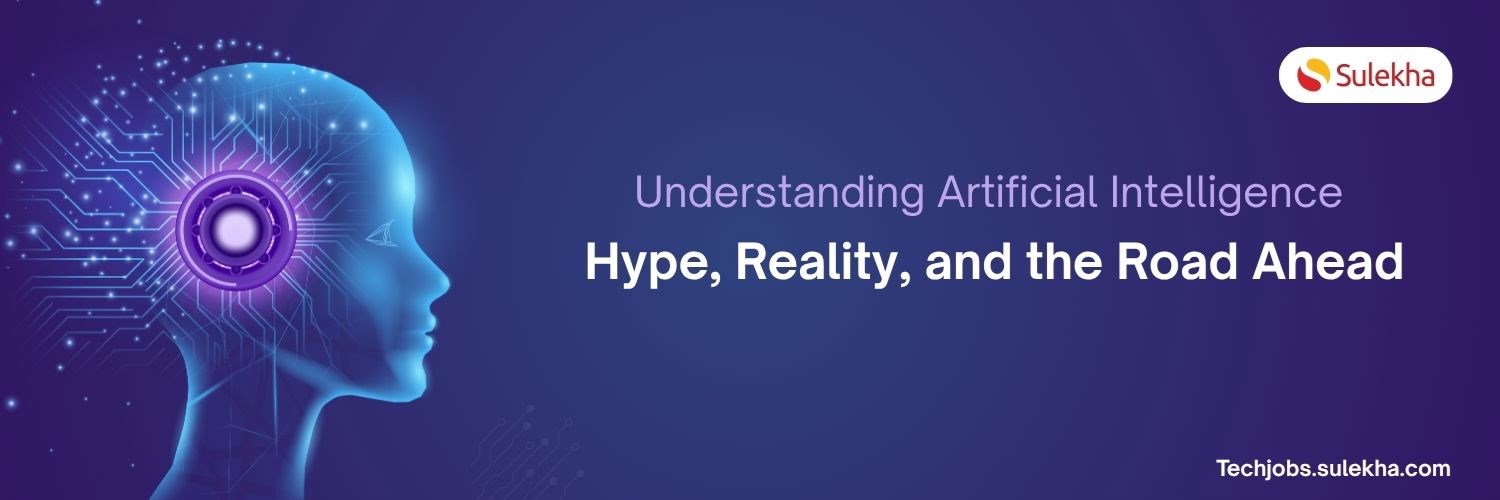
Understanding Artificial Intelligence: Hype, Reality, and the Road Ahead
Explore the reality of Artificial Intelligence (AI) — its impact, how it works, and its potential risks. Understand AI's benefits, challenges, and how to navigate its role in shaping industries and everyday life with expert training programs
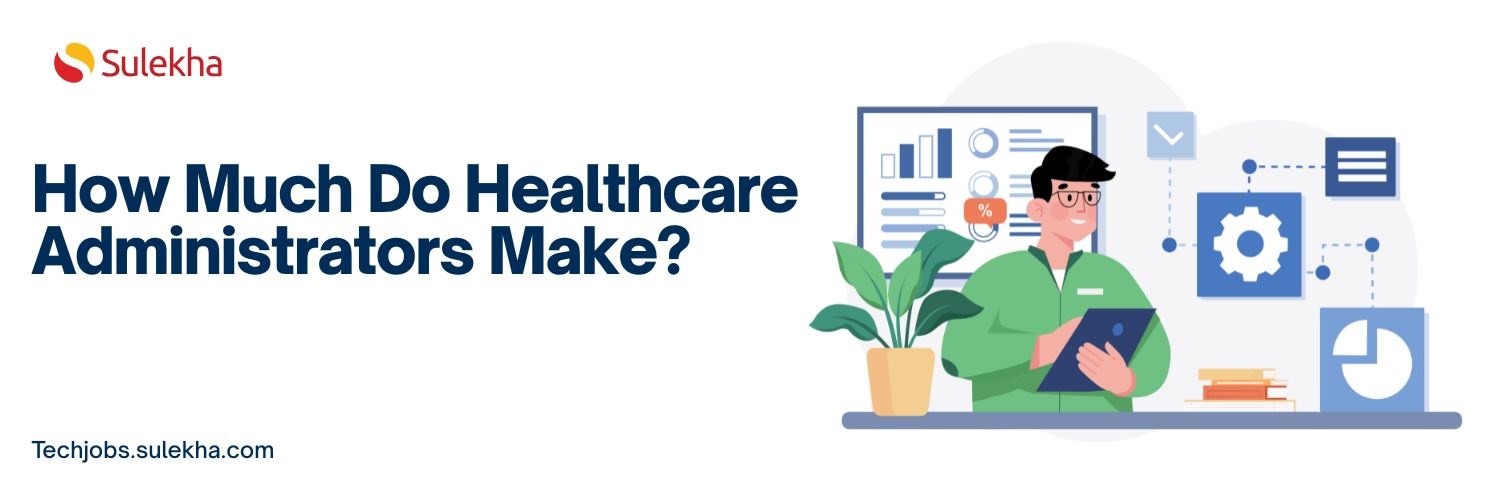
How Much Do Healthcare Administrators Make?
Discover how much healthcare administrators make, the importance of healthcare, career opportunities, and potential job roles. Learn about salary ranges, career growth, and training programs with Sulekha to kickstart your healthcare administration jo

How to Gain the High-Income Skills Employers Are Looking For?
Discover top high-income skills like software development, data analysis, AI, and project management that employers seek. Learn key skills and growth opportunities to boost your career.

What Companies Expect from Product Managers in 2025: Skills, Tools, and Trends
Explore what companies expect from Product Managers in 2025, including essential skills, tools, certifications, and salary trends. Learn how to stay ahead in a rapidly evolving, tech-driven product management landscape.
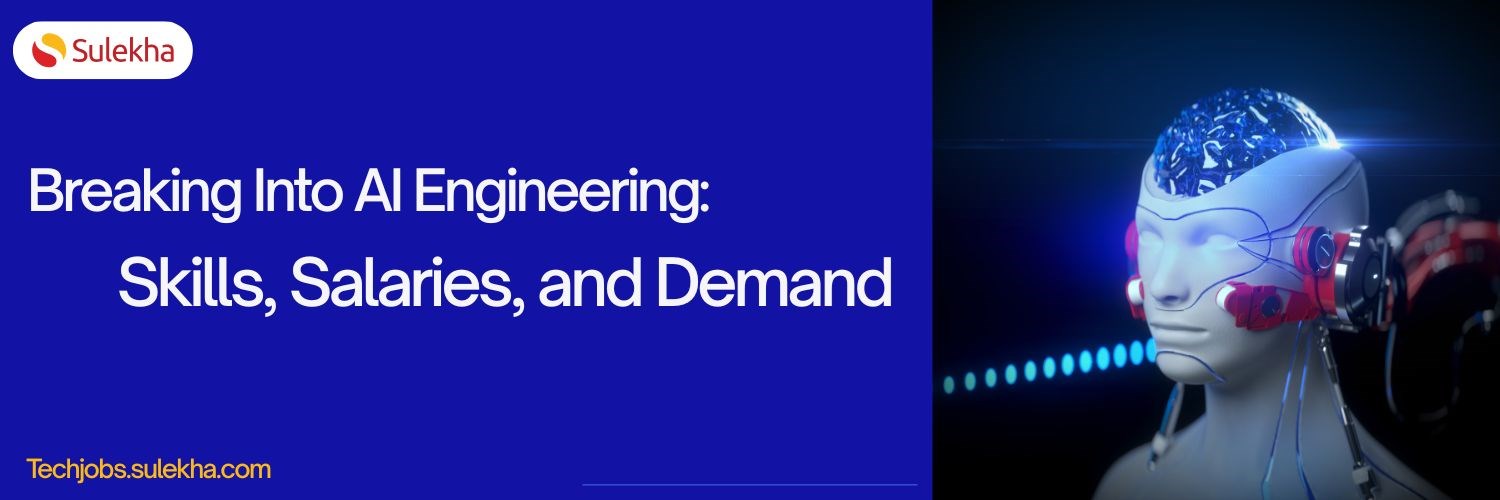
Breaking Into AI Engineering: Skills, Salaries, and Demand in the US
Discover how to break into AI engineering with insights on essential skills, salary expectations, and rising demand in the US. Learn about career paths, certifications, and how to succeed in one of tech’s fastest-growing fields.

Cybersecurity Training: Powering Digital Defense
Explore top cybersecurity training programs in the USA to meet rising demand in digital defense. Learn about certifications, salaries, and career opportunities in this high-growth field.

Why Pursue Data Science Training?
Empower your career in a data-driven world. Learn why data science training is crucial for high-demand jobs, informed decisions, and staying ahead with essential skills.

What Does a Cybersecurity Analyst Do? 2025
Discover the vital role of a Cybersecurity Analyst in 2025, protecting organizations from evolving cyber threats through monitoring, threat assessment, and incident response. Learn about career paths, key skills, certifications, and why now is the be

Artificial intelligence in healthcare: Medical and Diagnosis field
Artificial intelligence in healthcare: Medical and Diagnosis field

iOS 18.5 Is Here: 7 Reasons You Should Update Right Now
In this blog, we shall discuss Apple releases iOS 18.5 with new features and bug fixes
- Certified Information Systems Auditor
- CompTIA Security+ 701
- Information Security Analyst
- Systems Security Certified Practitioner (SSCP)
- Cyberark
- Cybersecurity Essentials Protecting Yourself In The Digital Age
- CEH
- CISSP
- Cyber Security
- CompTIA PenTest + PT0-001 Master Pentesting
- Information Security Manager
- CISA
